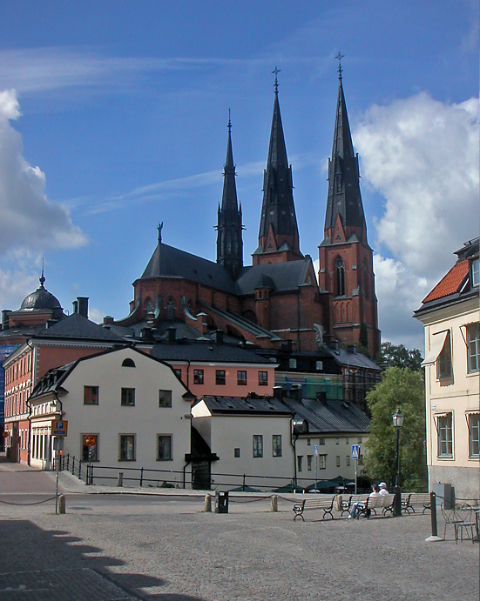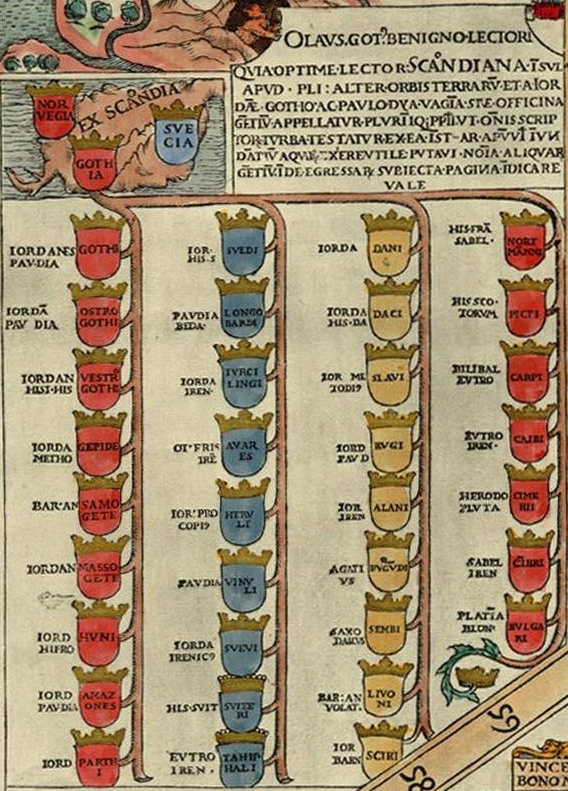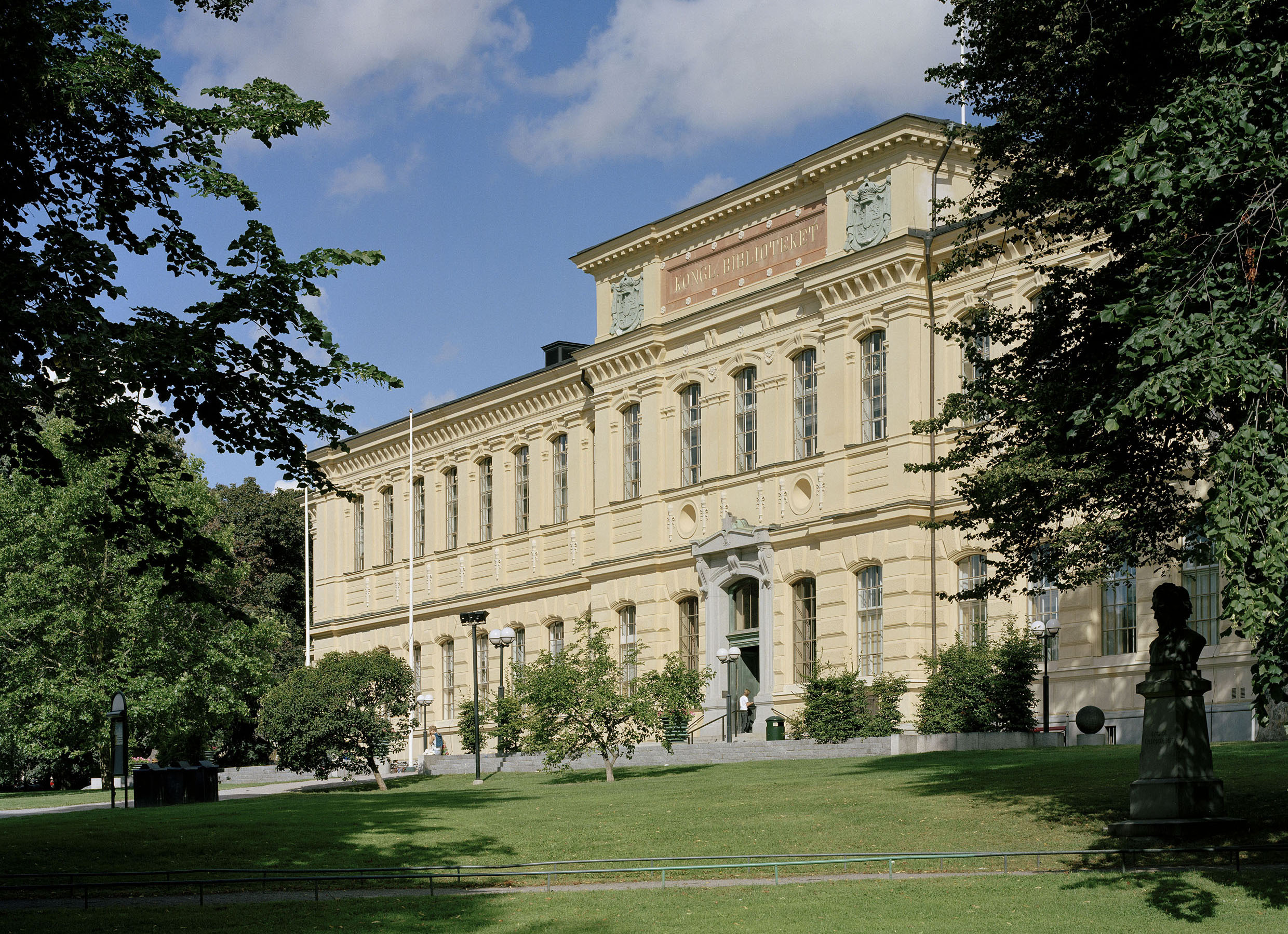|
Ericus Olai
Ericus Olai (ca. 1420-1486) was a Swedish theologian and historian. He served as a professor of theology at Uppsala University and dean at Uppsala Cathedral. Ericus Olai was the author of the chronicle ''Chronica regni Gothorum'' and was an early proponent of Gothicismus. Biography Neither the date nor place of his birth are known with certainty. He was probably born during the 1420s. Olai studied in the University of Rostock (Magister Artium. 1452). After working as canon in Uppsala, he attended the University of Siena (Magister de Sacra Theologia. 1475). He became a professor of theology at Uppsala University in 1477 and dean at Uppsala Cathedral in 1479. He died on Christmas eve in 1486 and was buried in Uppsala Cathedral. His tomb was the center of a substantial local tradition of veneration of the "holy doctor Ericius". His tombstone was destroyed in a fire in 1702. Olai initiated what would become the Gothicismus movement of Swedish Romantic nationalism in his ''Chro ... [...More Info...] [...Related Items...] OR: [Wikipedia] [Google] [Baidu] |
Uppsala University
Uppsala University ( sv, Uppsala universitet) is a public university, public research university in Uppsala, Sweden. Founded in 1477, it is the List of universities in Sweden, oldest university in Sweden and the Nordic countries still in operation. The university rose to significance during the rise of Swedish Empire, Sweden as a great power at the end of the 16th century and was then given a relative financial stability with a large donation from King Gustavus Adolphus of Sweden, Gustavus Adolphus in the early 17th century. Uppsala also has an important historical place in Swedish national culture, identity and for the Swedish establishment: in historiography, literature, politics, and music. Many aspects of Swedish academic culture in general, such as the white student cap, originated in Uppsala. It shares some peculiarities, such as the student nation system, with Lund University and the University of Helsinki. Uppsala belongs to the Coimbra Group of European universities a ... [...More Info...] [...Related Items...] OR: [Wikipedia] [Google] [Baidu] |
Uppsala Cathedral
Uppsala Cathedral ( sv, Uppsala domkyrka) is a cathedral located between the University Hall of Uppsala University and the Fyris river in the centre of Uppsala, Sweden. A church of the Church of Sweden, the national church, in the Lutheran tradition, Uppsala Cathedral is the seat of the Archbishop of Uppsala, the primate of Sweden. It is also the burial site of King Eric IX (c. 1120–1160, reigned 1156–1160), who became the patron saint of the nation, and it was the traditional location for the coronation of new Kings of Sweden. The current archbishop is Martin Modéus and the current bishop is Karin Johannesson. The cathedral dates to the late 13th century and, at a height of , it is the tallest church in the Nordic countries. Originally built under Roman Catholicism, it was used for coronations of Swedish monarchs for a lengthy period following the Protestant Reformation. Several of its chapels were converted to house the tombs of Swedish monarchs, including Gustav Vas ... [...More Info...] [...Related Items...] OR: [Wikipedia] [Google] [Baidu] |
Gothicismus
Gothicism or Gothism ( sv, Göticism ; la, Gothicismus) was a cultural movement in Sweden, centered on the belief in the glory of the Swedish Geats, who were identified with the Goths. The founders of the movement were Nicolaus Ragvaldi and the brothers Johannes and Olaus Magnus. The belief continued to hold power in the 17th century, when Sweden was a great power following the Thirty Years' War, but lost most of its sway in the 18th. It was renewed by the Viking revival and Romantic nationalism in the early 19th century, this time with the Vikings as heroic figures. Origins The name is derived from the Gothicists' belief that the Goths had originated from Sweden, based on Jordanes' account of a Gothic ''urheimat'' in Scandinavia (Scandza). The Gothicists took pride in the Gothic tradition that the Ostrogoths and their king Theodoric the Great, who assumed power in the Roman Empire, had Scandinavian ancestry. This pride was expressed as early as the medieval chronicles, where chr ... [...More Info...] [...Related Items...] OR: [Wikipedia] [Google] [Baidu] |
University Of Rostock
The University of Rostock (german: link=no, Universität Rostock) is a public university located in Rostock, Mecklenburg-Vorpommern, Germany. Founded in 1419, it is the third-oldest university in Germany. It is the oldest university in continental northern Europe and the Baltic Sea area, and 8th oldest in Central Europe. It was the 5th university established in the Holy Roman Empire. The university has been associated with five Nobel laureates: Albrecht Kossel, Karl von Frisch, Otto Stern, Pascual Jordan, and Walter H. Schottky. It is a member of the European University Association. According to a ranking published by ''Times Higher Education'' in 2018, it is the most beautiful university in Germany and the fourth most beautiful university in all of Europe. The language of instruction is usually German and English for some postgraduate studies. History The university was founded in 1419 by confirmation of Pope Martin V and thus is one of the oldest universities in Northern ... [...More Info...] [...Related Items...] OR: [Wikipedia] [Google] [Baidu] |
University Of Siena
The University of Siena ( it, Università degli Studi di Siena, abbreviation: UNISI) in Siena, Tuscany, is one of the oldest and first publicly funded universities in Italy. Originally called ''Studium Senese'', the institution was founded in 1240. It had around 20,000 students in 2006, nearly half of Siena's total population of around 54,000. In the academic year 2022–2023, it had a total undergraduate enrollment of 17,00 and graduate enrollment of 2,989. Today, the University of Siena is best known for its Schools of Law, Medicine, and Economics and Management. History The early ''studium'' The School of Humanities and Philosophy On December 26, 1240, Ildebrandino Cacciaconti, the then podestà of Siena, signed a decree imposing a tax on citizens of Siena who rented rooms to students of the local "''Studium Senese''". The money from this tax went to pay for the salaries of the ''maestri'' (teachers) of this new studium. The studium was further supported when, in 1252, ... [...More Info...] [...Related Items...] OR: [Wikipedia] [Google] [Baidu] |
Romantic Nationalism
Romantic nationalism (also national romanticism, organic nationalism, identity nationalism) is the form of nationalism in which the state claims its political legitimacy as an organic consequence of the unity of those it governs. This includes such factors as language, race, ethnicity, culture, religion, and customs of the nation in its primal sense of those who were born within its culture. It can be applied to ethnic nationalism as well as civic nationalism. Romantic nationalism arose in reaction to dynastic or imperial hegemony, which assessed the legitimacy of the state from the top down, emanating from a monarch or other authority, which justified its existence. Such downward-radiating power might ultimately derive from a god or gods (see the divine right of kings and the Mandate of Heaven). Among the key themes of Romanticism, and its most enduring legacy, the cultural assertions of romantic nationalism have also been central in post-Enlightenment art and political phi ... [...More Info...] [...Related Items...] OR: [Wikipedia] [Google] [Baidu] |
John Messenius
Johannes Messenius (1579–1636) was a Swedish historian, dramatist and university professor. He was born in the village of Freberga, in Stenby parish in Östergötland, and died in Oulu, in modern-day Finland. Childhood He was the son of a miller named Jöns Thordsson. At an early age his brilliance caught the attention of a monastery priest named Magnus Andreae, who gave him guidance and taught him. Unbeknownst to the boy's parents, the priest sent him to the Jesuit school in Braunsberg, which was specialized in educating boys for winning Scandinavia back from Protestantism. Seeking a position After seven years in Braunsberg, Johannes travelled across Europe. He visited Denmark in 1602, and in 1603, he was a dinner speaker at Bishop Piotr Tylicki in Kraków. He made a short visit in Rome in 1604, but the climate forced him to return to Germany where he possibly won an M.A. in Ingolstadt, in 1605. He is also said to have received the title '' Poëta cæsarius'' ("poet of the Em ... [...More Info...] [...Related Items...] OR: [Wikipedia] [Google] [Baidu] |
Uppsala University Library
The Uppsala University Library ( sv, Uppsala universitetsbibliotek) at Uppsala University in Uppsala, Sweden, consists of 11 subject libraries, one of which is housed in the old main library building, Carolina Rediviva. The library holds books and periodicals, manuscripts, musical scores, pictures and maps. History The exact site of the library during its earliest years is not known, but the university from its foundation in 1477, was located on what became known as "Student Island" in the Fyris River, where the academy mill – now the provincial museum – was later built. In 1566, King Eric XIV donated the old chapter house, south of the Uppsala Cathedral, to be used for lectures. After the construction of the Gustavianum in the 1620s, this building was referred to as the ''Collegium vetus'' or ''Gamla akademien'' ("the old academy"), until it was renamed in 1704 through a decision of the consistory (university board) and called the ''Academia Carolina'', in honour ... [...More Info...] [...Related Items...] OR: [Wikipedia] [Google] [Baidu] |
National Library Of Sweden
The National Library of Sweden ( sv, Kungliga biblioteket, ''KB'', meaning "the Royal Library") is Sweden's national library. It collects and preserves all domestic printed and audio-visual materials in Swedish, as well as content with Swedish association published abroad. Being a research library, it also has major collections of literature in other languages. Collections The collections of the National Library consist of more than 18 million objects, including books, posters, pictures, manuscripts, and newspapers. The audio-visual collection consists of more than 10 million hours of recorded material. The National Library is also a humanities research library, with collections of foreign literature in a wide range of subjects. The library holds a collection of 850 broadsides of Sweden dating from 1852. The National Library also purchases literature about Sweden written in foreign languages and works by Swedes published abroad, a category known as suecana. The National Libra ... [...More Info...] [...Related Items...] OR: [Wikipedia] [Google] [Baidu] |
National Archives Of Sweden
, nativename_a = , nativename_r = , seal = Riksarkivet_myndighetsvapen_-_Riksarkivet_Sverige.png , seal_width = 150 , seal_caption = , logo = , logo_width = , logo_caption = , picture = , picture_width = , picture_caption = , formed = , preceding1 = , preceding2 = , dissolved = , superseding = , agency_type = , jurisdiction = Government of Sweden , headquarters = Stockholm, Sweden , coordinates = , motto = , employees = , budget = , minister1_name = Jeanette Gustafsdotter , minister1_pfo = Ministry of Culture , minister2_name = , minister2_pfo = , deputyminister1_name = , deputyminister1_pfo = , deputyminister2_name = , deputyminister2_pfo = , chief1_name = , chief1_position = , chief2_name = , chief2_position = , parent_department = , parent_agency = , child1_agency = , chil ... [...More Info...] [...Related Items...] OR: [Wikipedia] [Google] [Baidu] |
15th-century Births
The 15th century was the century which spans the Julian dates from 1 January 1401 ( MCDI) to 31 December 1500 ( MD). In Europe, the 15th century includes parts of the Late Middle Ages, the Early Renaissance, and the early modern period. Many technological, social and cultural developments of the 15th century can in retrospect be seen as heralding the "European miracle" of the following centuries. The architectural perspective, and the modern fields which are known today as banking and accounting were founded in Italy. The Hundred Years' War ended with a decisive French victory over the English in the Battle of Castillon. Financial troubles in England following the conflict resulted in the Wars of the Roses, a series of dynastic wars for the throne of England. The conflicts ended with the defeat of Richard III by Henry VII at the Battle of Bosworth Field, establishing the Tudor dynasty in the later part of the century. Constantinople, known as the capital of the wo ... [...More Info...] [...Related Items...] OR: [Wikipedia] [Google] [Baidu] |
1486 Deaths
Year 1486 ( MCDLXXXVI) was a common year starting on Sunday (link will display the full Julian calendar for the year). Events January–December * January 18 – King Henry VII of England and Elizabeth of York are married, uniting the House of Lancaster and the House of York, after the Wars of the Roses. * February 16 – Archduke Maximilian I of Habsburg is elected King of the Romans at Frankfurt (crowned April 9 at Aachen). * February 18 – Lord Chaitanya Mahaprabhu is born in the town of Nadia, West Bengal, India, just after sunset. He is regarded as an incarnation, or avatar, of Lord Krsna, and later comes to inaugurate the sankirtana movement, or the chanting of the Holy Names of the Lord. This chanting, or mantra meditation, is first brought to the United States in 1965, by A.C. Bhaktivedanta Swami Prabhupada. * April 21 – The adoption of the ''Sentència Arbitral de Guadalupe'' ends the War of the Remences, in the Principality of Catalonia. ... [...More Info...] [...Related Items...] OR: [Wikipedia] [Google] [Baidu] |








